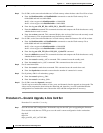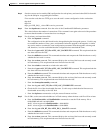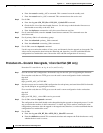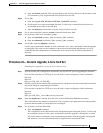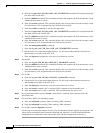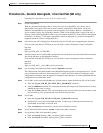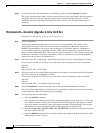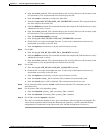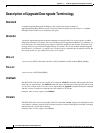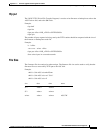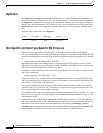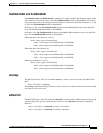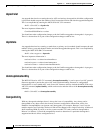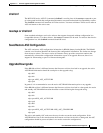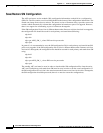
C-42
Cisco MGX 8220 Installation and Configuration
Release 5.0, Part Number 78-6430-03 Rev. D0, November 2003
Appendix C Firmware Upgrade and Downgrade Procedures
Description of Upgrade/Downgrade Terminology
Description of Upgrade/Downgrade Terminology
Standard
A standard upgrade/downgrade technique is the simplest and fastest method for
upgrading/downgrading between a pair of firmware and/or backup boot code releases. A standard
technique trades traffic loss for simplicity and speed.
Graceful
A graceful upgrade/downgrade technique attempts to minimize traffic loss at the expense of added
complexity and time. For example, the service module graceful upgrade from Release 3.x to Release 3.y
for a shelf with a 9:1 redundancy group requires 18 resetcd operations and can take 20 minutes. The
average traffic loss per connection approximately 20 seconds. The service module standard upgrade
from Release 3.x to Release 3.y requires only a single resetsys command and can take 60 seconds, but
the average traffic loss per connection can be over a minute.
One-cc
1-core card set (MGX 8220 shelf controller [ASC] broadband network module [BNM] [SRM]).
Two-cc
2-core card sets (ASC BNM [SRM]).
chkflash
The MGX 8220 ASC and service module CLI command, chkflash, calculates and compares the Flash
checksum. In some releases, the chkflash command reports the firmware or backup boot code version
as it resides in Flash. In this case, the version reported by the chkflash command should be compared
with the version of firmware or backup boot code which was TFTP-put.
Example: shelf.1.<slot>.<type>.<a|s>chkflash
Version
The MGX 8220 ASC and service module (SM) CLI command, version, displays the backup boot code
version that is currently stored in Flash (not necessarily the version of backup boot code that is running)
and the firmware version that is running.
Example: shelf.1.<slot>.<type>.<a|s>version



